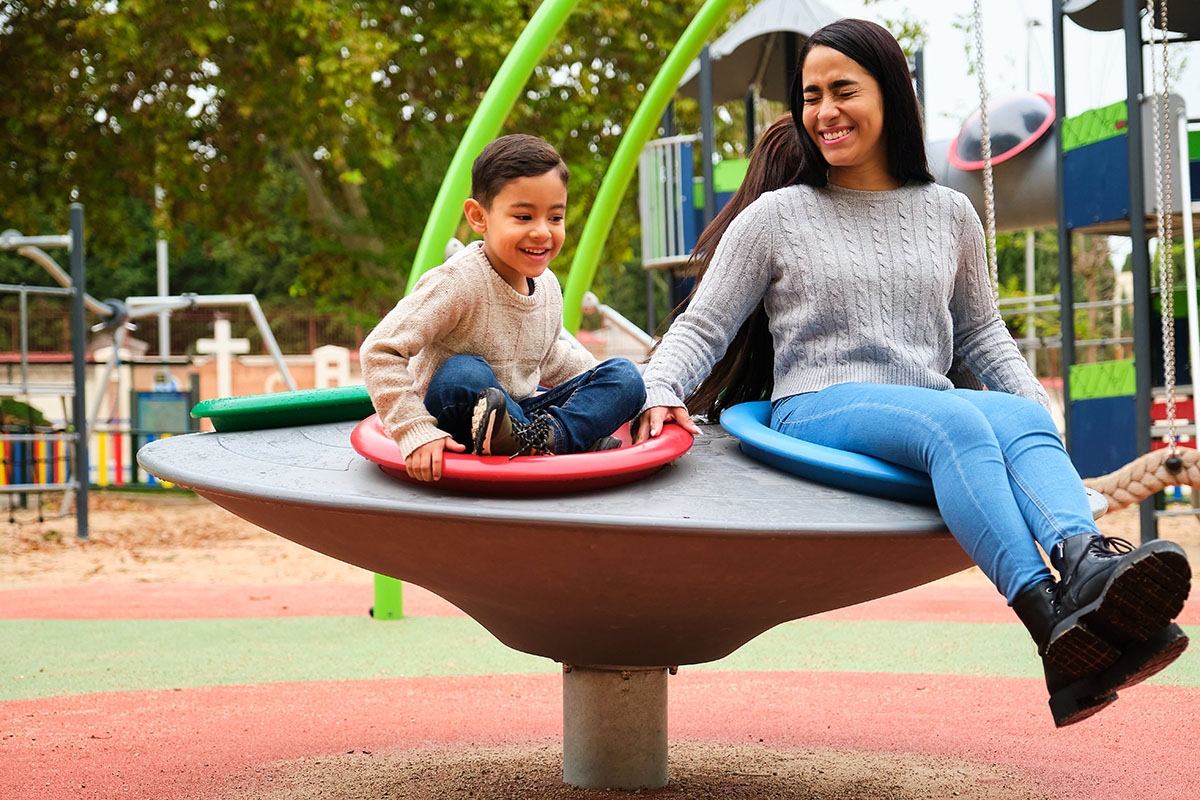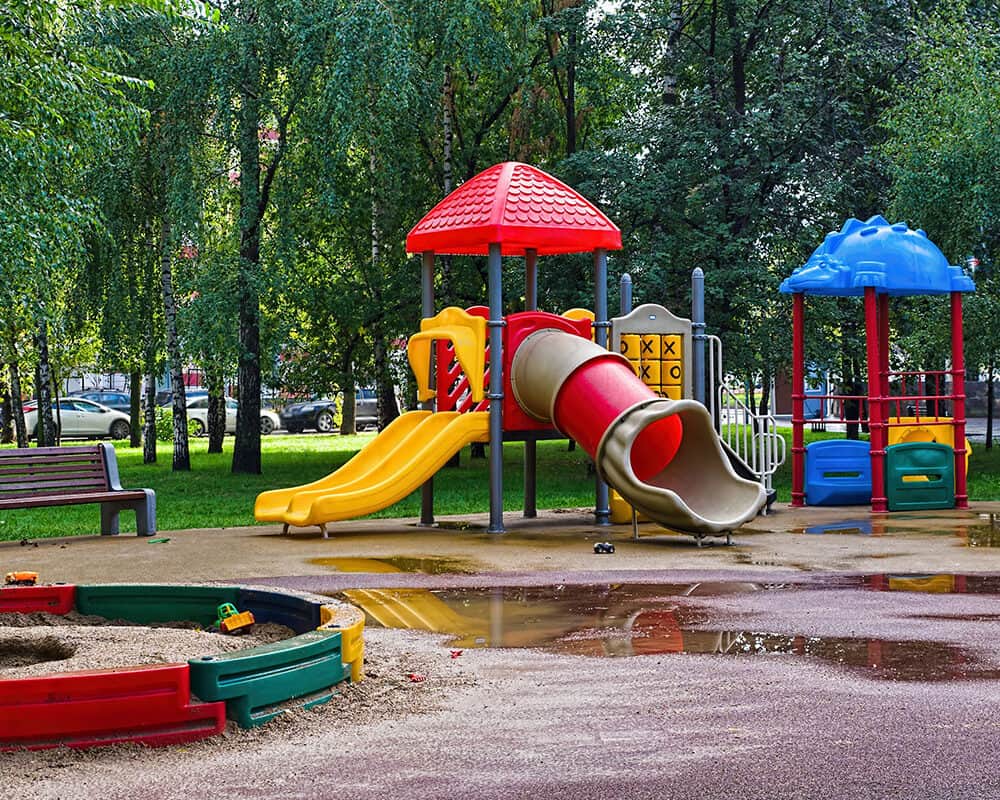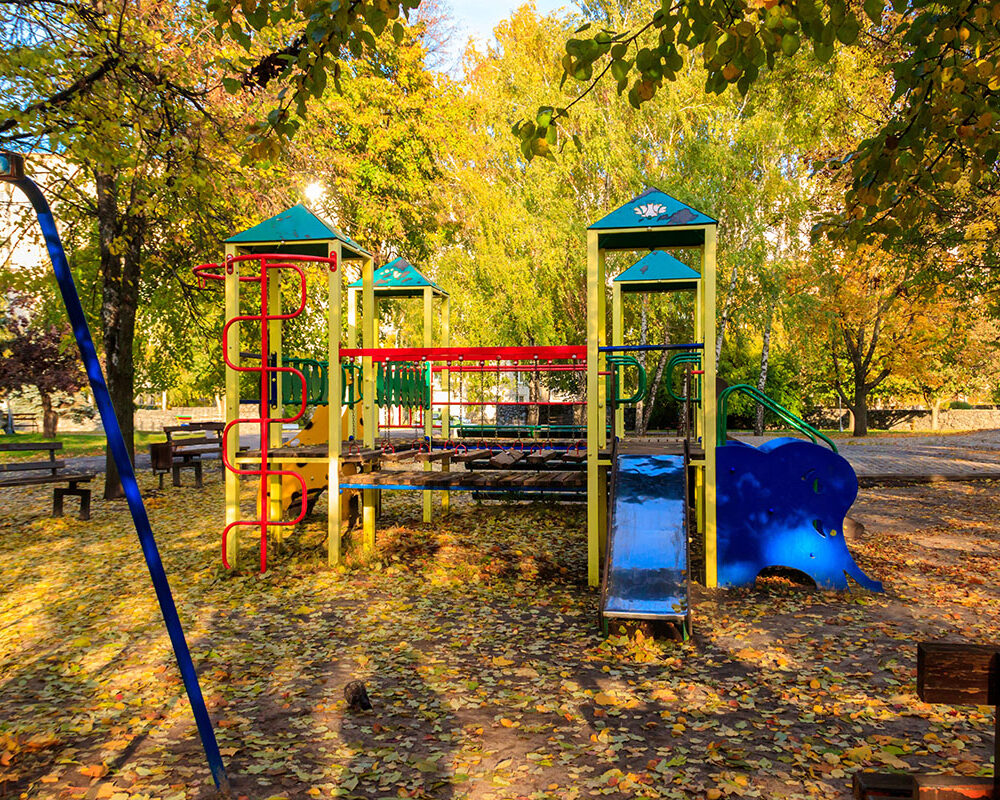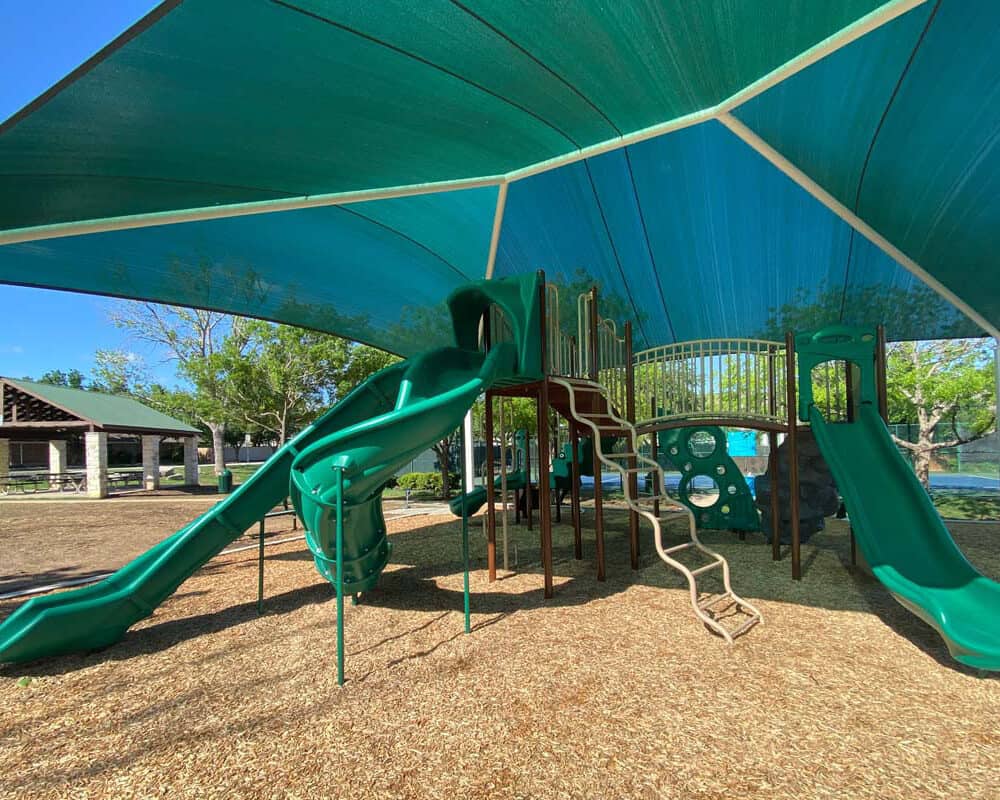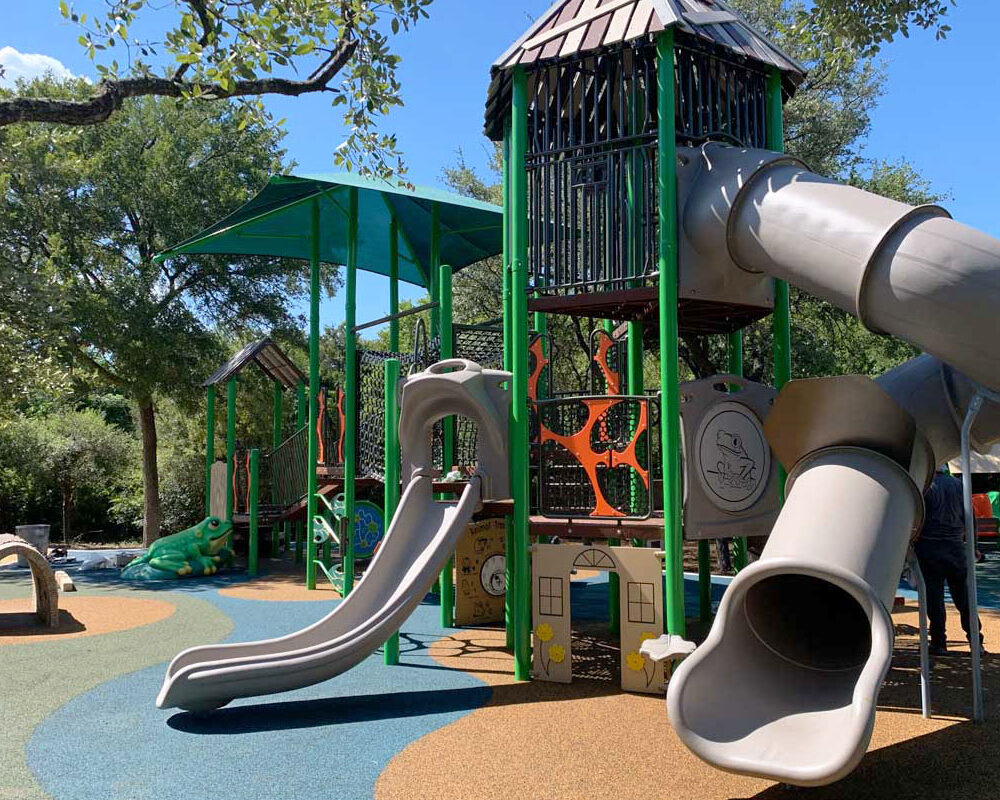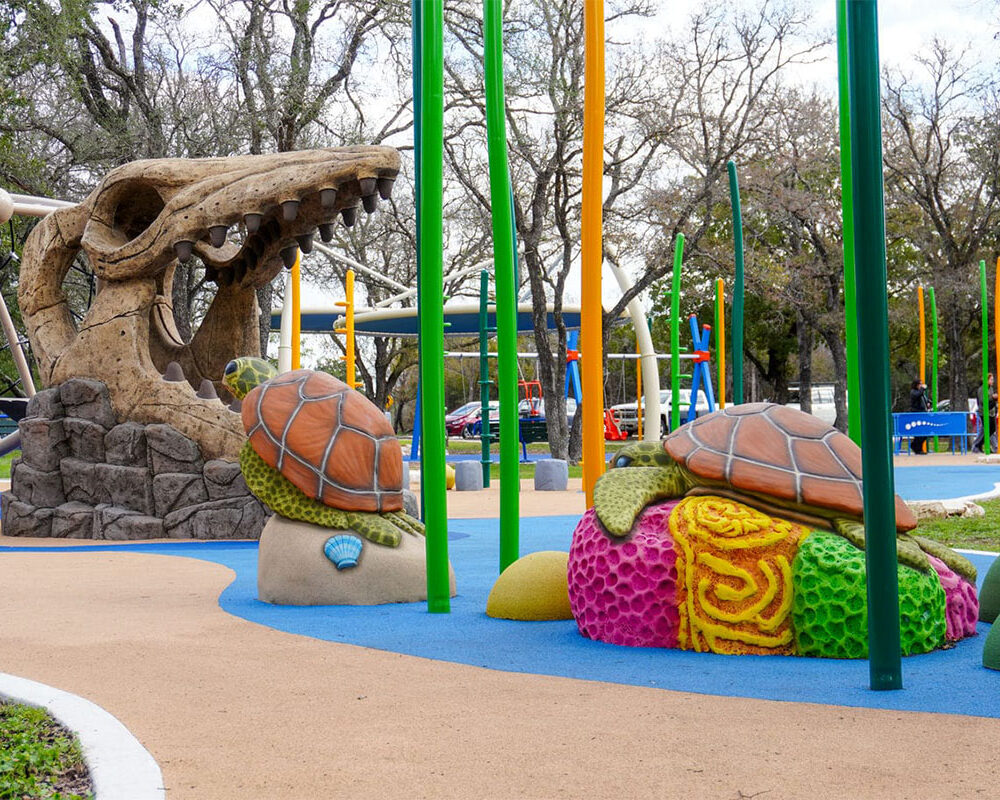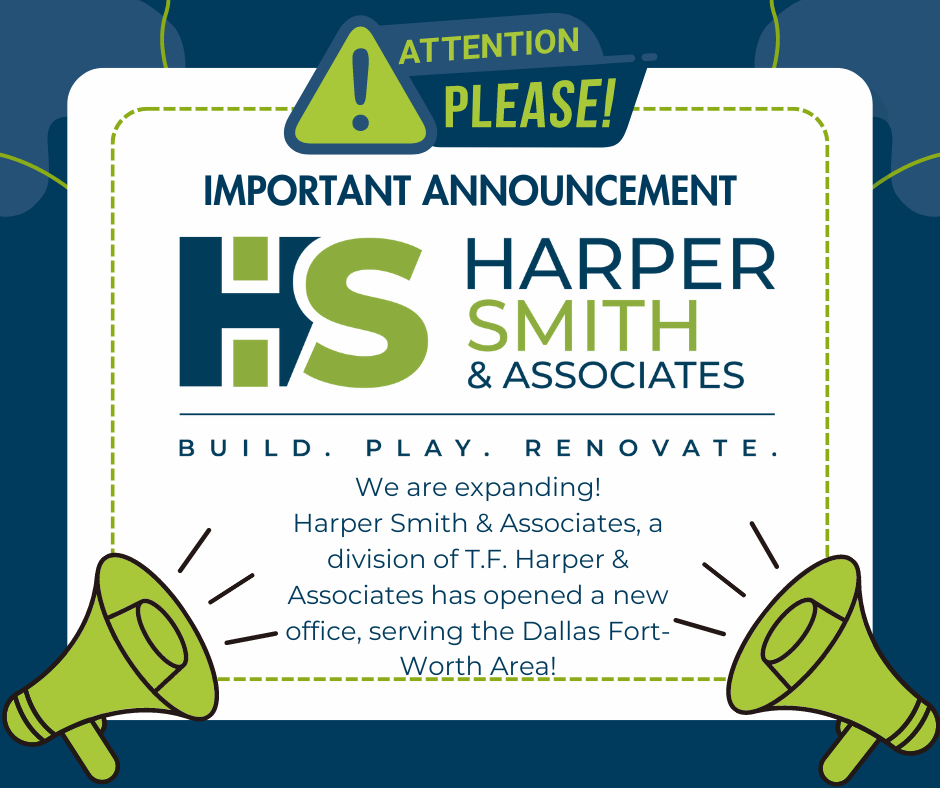Playground safety is extremely important when creating recreational areas for everyone to use. It’s vital to understand why using strong and long-lasting materials for Austin playgrounds keeps both children and adults safe.
Below, we will:
- Discuss why playground safety is important
- Provide an overview of suitable materials for public playgrounds
- Explain why durability is important in building safe and environmentally friendly play spaces
With a trusted construction contractor in Austin affects playground safety, we can better understand the significance of selecting sturdy and durable materials for everyone to play on.
Playground Hazards and Safety Measures
Common playground hazards pose significant risks to children’s safety and well-being. Preventing accidents is significant in maintaining a safe play environment:
1. Entrapment Hazards
Tight spaces, openings, or protrusions in playground equipment can trap children, leading to injuries. Regular inspections and maintenance identify and address potential entrapment hazards promptly.
2. Hot Surfaces
Exposed metal or plastic surfaces under direct sunlight can become dangerously hot, causing burns or discomfort to children. Installing shade structures or choosing materials that do not absorb as much heat can help mitigate this risk.
3. Tripping Hazards
Uneven surfaces, loose equipment parts, or debris on the playground can cause children to trip and fall. Proper surfacing materials and regular cleaning and maintenance routines are necessary to prevent tripping hazards.
The Role of Durability in Playground Safety
Durability in playground materials has a direct and significant impact on safety. When materials withstand wear and environmental factors, they maintain structural integrity longer, reducing risks associated with equipment failure. For example, metal components that resist rust and corrosion avoid weakening that could lead to breaks or sharp edges, which pose serious injury hazards.
Consider how playground surfaces absorb impact. Durable surfacing materials like engineered wood fiber or rubber crumb maintain their cushioning properties over time. This consistent shock absorption helps prevent fractures or concussions from falls—one of the most common playground injuries. Surfaces that degrade quickly lose protection, increasing injury risk.
Durable materials also reduce maintenance frequency and costs. Worn-out equipment may develop splinters, cracks, or loose connections if not replaced promptly. These defects create entrapment or tripping hazards. Choosing long-lasting materials allows safer conditions to be preserved between inspections.
Reasons durability matters for injury prevention include:
- Sustained structural soundness prevents sudden equipment failure.
- Consistent impact absorption reduces the severity of fall injuries.
- Lower maintenance needs to limit exposure to hazardous conditions.
- Resistance to weather damage minimizes surface deterioration.
You protect children’s safety by selecting durable materials designed to endure heavy use and harsh outdoor environments. This foundation supports safer playground experiences every day.
Exploring Different Types of Playground Surfaces and Equipment Materials
Rubber Mulch
Advantages:
- Excellent impact absorption
- Low maintenance
- Long-lasting
Disadvantages:
- Initial higher cost
- Can scatter with heavy use
Engineered Wood Fiber
Advantages:
- Natural appearance
- Good impact attenuation
- Biodegradable
Disadvantages:
- Requires regular upkeep
- May compact over time
Sand Surfacing
Advantages:
- Soft landing surface
- Natural drainage
Disadvantages:
- Easily displaced
- Requires frequent leveling
When selecting playground materials, factors such as impact absorption, maintenance requirements, longevity, and cost must be considered for a safe and durable play environment. Each type of surfacing material offers unique benefits and drawbacks that cater to different needs and preferences.
Comparing Different Types of Playground Equipment Materials: Plastic, Metal, and Wood
Choosing the right material for playground equipment impacts safety, durability, maintenance, and user experience. Below is a detailed comparison of plastic playground equipment, metal playground equipment, and wood playground equipment.
Plastic Playground Equipment
Pros:
- Highly versatile and available in various bright colors.
- Smooth surfaces reduce the risk of splinters and sharp edges.
- Lightweight and easy to customize for different age groups.
- Generally safe for falls due to softer edges.
Cons:
- Less durable compared to metal; prone to cracking under heavy use or extreme weather.
- Can fade or become brittle from prolonged sun exposure.
- Maintenance required to prevent discoloration and wear.
Metal Playground Equipment
Pros:
- Extremely durable and strong, ideal for high-traffic areas.
- Long lifespan with proper maintenance such as rust prevention.
- Suitable for swings, climbers, and other structures requiring rigidity.
- Minimal deformation under intensive use.
Cons:
- Can become very hot under direct sunlight, posing burn risks.
- Harder surfaces increase injury risk.
- Requires regular inspections for rust or sharp edges developing over time.
Wood Playground Equipment
Pros:
- Natural aesthetic blends well with outdoor environments.
- Customizable shapes and sizes allow creativity in design.
- Provides a tactile experience appealing to older children.
Cons:
- Requires frequent maintenance to prevent splinters, rotting, and insect damage.
- Weather exposure can degrade structural integrity if untreated.
- Heavy material complicates installation and relocation.
Each material excels in different scenarios:
- Plastic suits younger children who need gentle surfaces.
- Metal fits busy public parks demanding longevity.
- Wood offers natural charm but needs more upkeep.
Your choice should balance these factors with safety priorities and budget constraints.
The Enduring Foundation: Building Play Spaces That Last a Lifetime
Choosing the right playground equipment directly impacts playground durability in public spaces and the safety of every child who uses them. Durable playground equipment in Austin can withstand heavy use, weather conditions, and reduce maintenance needs, which helps keep equipment safe and functional longer. When materials fail prematurely, hazards like splinters, rust, or structural instability increase injury risks.
Reasons why durability matters in playground materials for public use:
- Enhanced safety: Durable surfaces and equipment prevent accidents caused by wear and tear.
- Cost-effectiveness: Long-lasting materials reduce frequent replacement and repair expenses.
- Sustained play experience: Reliable equipment encourages consistent physical activity and social interaction.
- Compliance: Durable materials help meet safety standards set by regulatory bodies.
Investing in durable playground components is investing in children’s well-being and community value. Prioritize quality materials to create public playgrounds that are safe, inviting, and built to last.
Frequently Asked Questions About Playground Materials
Why is durability important in playground materials for public use?
Durability in playground materials is pivotal because it directly impacts the safety and longevity of public playgrounds. Durable materials withstand wear and environmental factors, reducing the risk of injuries caused by material failure or degradation.
What are common playground hazards and how can they be prevented?
Common playground hazards include entrapment hazards, hot surfaces, and tripping hazards. These can be prevented by selecting appropriate durable materials, regular maintenance, and implementing safety measures such as proper surfacing and equipment design to minimize risks.
How do different playground surfacing materials compare in terms of safety and durability?
Playground surfacing materials like rubber mulch, engineered wood fiber, and sand each have advantages and disadvantages. Rubber mulch offers good impact absorption and durability, engineered wood fiber provides natural aesthetics but requires maintenance, while sand is affordable but less durable. Choosing the right material involves balancing safety needs with durability considerations.
What are the pros and cons of plastic, metal, and wood playground equipment materials?
Plastic equipment is lightweight and resistant to weather but may degrade under UV exposure; metal is strong and durable but can become hot in sunlight posing burn risks; wood offers a natural look but requires regular maintenance to prevent splinters and decay. Selecting equipment material depends on balancing safety, durability, maintenance, and aesthetic preferences.
How does material choice affect the prevention of playground injuries?
Choosing durable materials reduces the likelihood of equipment failure, surface degradation, or hazardous conditions that can lead to injuries. Materials that maintain structural integrity under heavy use help prevent accidents related to entrapment, tripping, or impact injuries.
What factors should be considered when selecting materials for a safe and durable public playground?
Key factors include material durability against weather and heavy use, safety features such as impact absorption and heat resistance, maintenance requirements, cost-effectiveness, and compliance with playground safety standards. Considering these ensures a playground that is both safe for children and sustainable over time.

